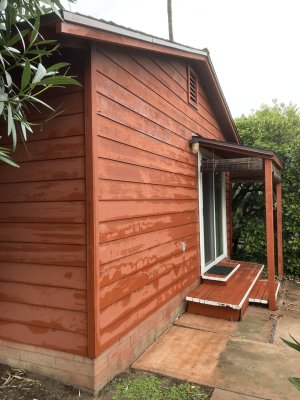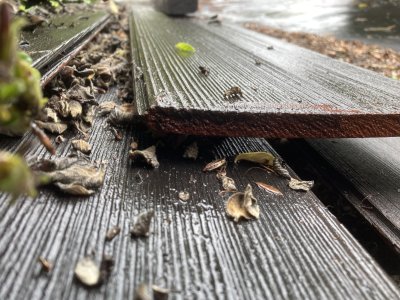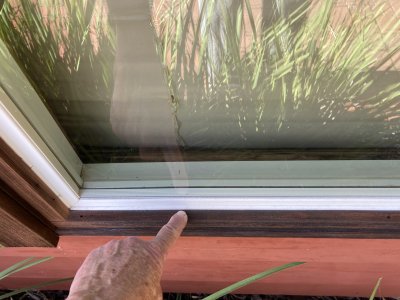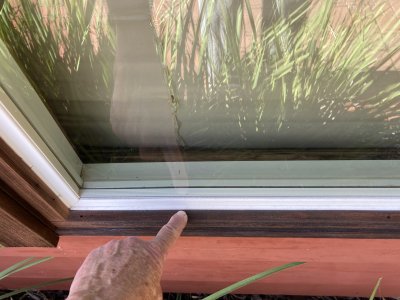- Feb 1, 2024
- 7
- 0
- 6
We have a guest house with 56-yr. old, 3/8" shiplap siding, built in 1968, that began shrinking in width over the years The siding was originally fastened using one nail center-stud placed every 16".
Because the planks are only 3/8" and face east, the top thinner edge warped first.
At the time of first repair my only option available was to fasten the thin, bowed edges with a wood screw into a stud only until the top thin-edge got recessed under the overhead overhanging lap that wasn't seated on top of the thin edge at all.
I would like to use redwood material from this stack of 16' x 3/8" T&G butt joint planks that were salvaged from a 16' wide garage door covering. The tongue & grooves are only 1/4" so the joints are not usable in my siding repair situation.
I could rip strips from the stack of planks to any width needed if I wanted to scab a strip (one nail) to studs along the warped edge, under the thick (bottom) edge of the lap above it, but the planks would be the same 3/8 thickness - and when the two edges are butted-up, rainwater has a great tendency to move inward through the gap. Exterior gluing the butted edges together would not survive expansion and contraction exposure.
Any thoughts on how I can utilize the materials I have on hand to eliminate rainwater intrusion would be greatly appreciated. Thanks
Because the planks are only 3/8" and face east, the top thinner edge warped first.
At the time of first repair my only option available was to fasten the thin, bowed edges with a wood screw into a stud only until the top thin-edge got recessed under the overhead overhanging lap that wasn't seated on top of the thin edge at all.
I would like to use redwood material from this stack of 16' x 3/8" T&G butt joint planks that were salvaged from a 16' wide garage door covering. The tongue & grooves are only 1/4" so the joints are not usable in my siding repair situation.
I could rip strips from the stack of planks to any width needed if I wanted to scab a strip (one nail) to studs along the warped edge, under the thick (bottom) edge of the lap above it, but the planks would be the same 3/8 thickness - and when the two edges are butted-up, rainwater has a great tendency to move inward through the gap. Exterior gluing the butted edges together would not survive expansion and contraction exposure.
Any thoughts on how I can utilize the materials I have on hand to eliminate rainwater intrusion would be greatly appreciated. Thanks












